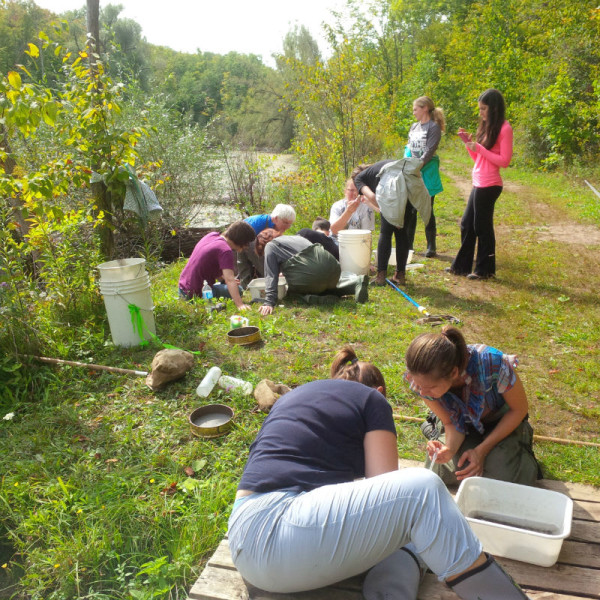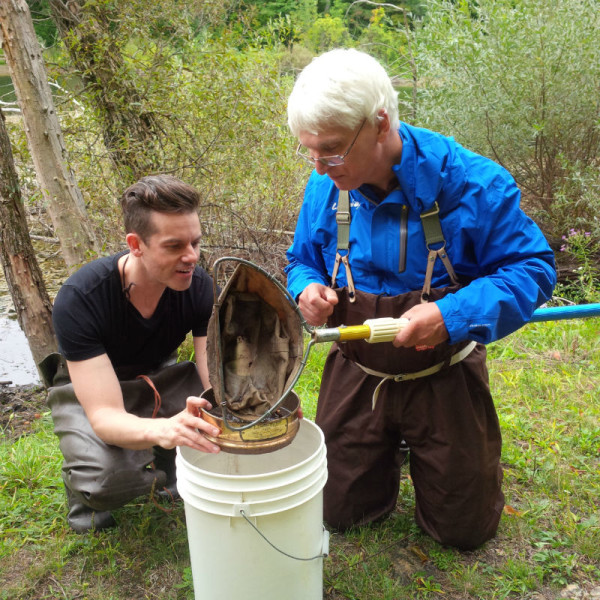EcoSpark’s Changing Currents program inspires teachers and students alike!
EcoSpark’s Changing Currents program, funded by Loblaw Water Fund, connects students to the nature in their community through monitoring and exploring local rivers. EcoSpark makes this possible by guiding both students and their teachers through this transformative experience.
Written by Holly Brose, EcoSpark
As an education coordinator at EcoSpark, more often than not, I’m the face of our Changing Currents program. Our program introduces Grade 8-12 students from across the GTA to their local streams, and teaches them watershed science. I’m the one talking excitedly about bugs at teacher training, running up and down the study site, providing guidance and an extra pair of hands on the net, sieve or bucket. Whether it be by email or at the creek’s edge, I’m ready to answer all manner of river study questions.
Changing Currents takes place in the waterways that run across school property and in the ravines students pass on their walk home. It allows students to get outside, put on hip waders, and explore the local nature they know, but may not yet have come to love. A Grade 8 teacher I worked with last spring said she thought Change Currents was an essential program for inspiring children to get outside and to feel invested in the natural world in their own community, especially considering, as she said, “children are so deprived of nature.”
In the fall of 2015, veteran Changing Currents teachers and their classes started off their biology, geography, and chemistry courses with some student-gathered field data. The data, published on our online database, measures river health in their own community, and contributes to a Canada-wide assessment of watershed health with WWF-Canada.
I see many teachers returning to the program season after season. This fall, 65 per cent of participating teachers returned to the program. A Toronto high school teacher, who I have worked with through six seasons, finds that the study enables students to be involved in a real citizen science project. In fact, because our program provides such a vivid way to discuss water quality, this teacher uses the stream study to kick off an entire unit on the politics of water! The program is a big draw for teachers who want to connect their students to nature; so far we’ve served 1,990 students in 65 field studies and welcomed 28 new teachers to the program.
Fall and spring are the times when we welcome new teachers to the program at our teacher training sessions held at the beautiful Terra Cotta Conservation Area. This September we hosted another successful training date where the teachers get a crash course on benthic (bug) monitoring, identification, and curriculum connections. The highlight of the day always comes after lunch when we spend the whole afternoon exploring the creeks. Teachers walk away from the training session, not only with new knowledge, but with a contagious enthusiasm for learning through nature.
EcoSpark’s Changing Currents is our longest running program, celebrating 15 years in 2015! Changing Currents would not be possible without support from our awesome supporters like the WWF Loblaw Water Fund – funders who truly value environmental education, citizen science and getting students in waders and into our local streams!
If you’re a registered charity or not-for-profit, you can find this year’s Applications and Guidelines for the Loblaw Water Fund at wwf.ca/waterfund. Hurry – the application deadline is December 14, 2015.



